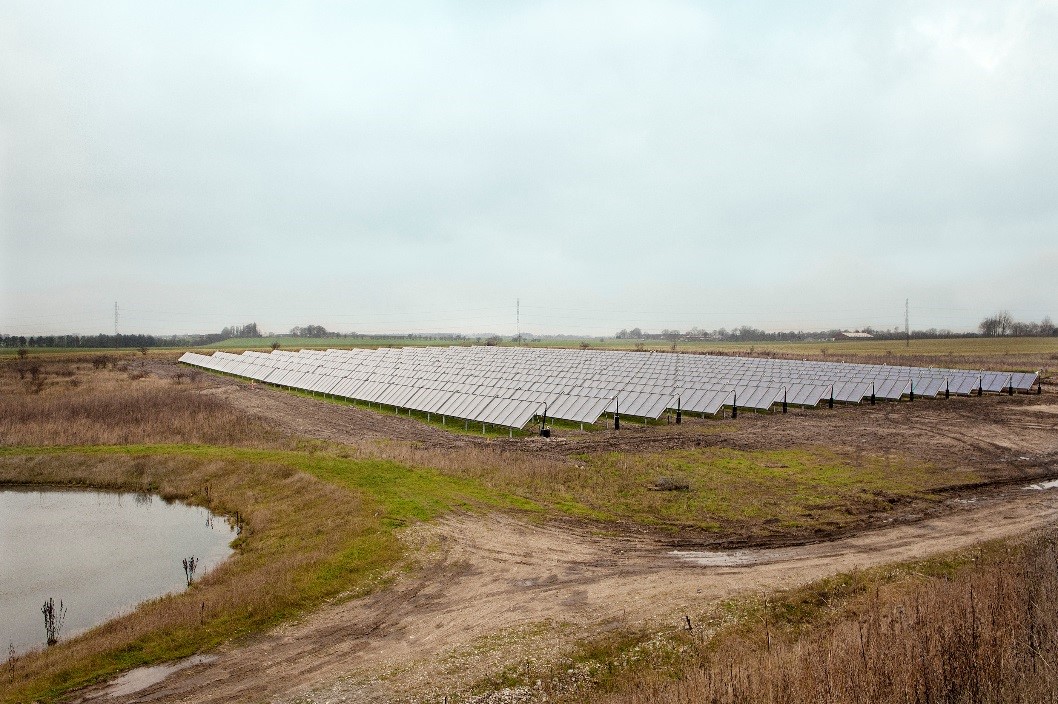Key figures Høje Taastrup Community |
|
 |
|
|
| Inhabitants of municipality: 46,000 and inhabitants of ECO-Life community: 12,000
The main components in Høje Taastrup will be: |
|
Renewable energy supply (RES) |
- 20-25,000 m2 new high-efficient solar thermal collector field possibly connected to the VEKS inter-municipal district
heating transmission line - of this 3,000 m2 are dedicated to the project partly as solar collectors on buildings and in
connection with the energy conversion central. Alternatively WTE / biogasification plant or other RES.
|
|
 |
|
|
- 1 wind turbine
- Approx. 18,000 m2 Photo Voltaic panels
- Decentral heat pumps
|
Energy efficiency in buildings (RUE)
|
- Participatory approach to involve and commit citizens.
- 3 experimental flex houses for testing of new solutions to be rolled out in large scale.
- 40 passive dwellings on 4573 m2 (as the beginning of a major passive house settlement).
- 102 dwellings to be ECO-rehabilitated - a total of 10,800 m2.
- 70
A+dwellings (better than Class 1 standard) are dedicated to the project
- a total of 7,000 m2, to become the first of 2,500 new ECO-dwellings
that will be constructed in the Vision area.
- 8,000 m2 tertiary buildings to be built as low-energy buildings (school, institution and administration offices).
- RUE
in dwellings and tertiary buildings covering offices, schools and
institutions obtained through yearly improvements and campaigns.
- The buildings include extra insulation with focus on
avoiding cold bridges, new types of low-energy windows, special
emphasis on air tightening, demand controlled ventilation, heat
recovery and metering etc.
|
Polygeneration
|
- 376
kW combined heat pump(s) and cooling plant combined with seasonal
energy storage as a ground source TES system to show how the high
temperature in the transmission line can operate thermal cycles
enabling extra energy to be extracted from the surroundings used to
produce low-temperature district heating. This will reduce grid losses;
improve energy production capacity and increase (gear) the share of
renewable energy in the DH supply, which is already based on a mixture
of geothermal energy, biomass, energy from waste, and surplus heat from
industries and CHP power plants. The CHP plants in the system are
designed to operate with a large share of biomass as fuel.
|
Integration of RES and RUE
|
- Extra
RES covers need of the included ECO buildings after improving their
energy efficiency by various RUE actions. The buildings will be
supplied with RES dominated DH supply.
- Improvement of efficiency of DH generation and supply (system layout, decentralized buffers).
- Integrated use of a segmented underground seasonal energy storage.
- Integration
of SMART GRID solution e.g. for battery charging of electric cars.
These stations will be controlled according to real-time fluctuations
in production and demand on the power grid using ICT-based solutions,
e.g. Power Line Control PLC or Internet Protocol.
- Intelligent 2-way energy metering, information and control equipment.
- Use of low-energy street lighting.
|
Specific innovations
|
- "Whole
Town Approach" - involvement of citizens' right from the start to
influence the design of the city, including implementation and use of
different RUE and RES solutions.
- New types of user installations will be tested (first in
the flex houses and then on a larger scale) e.g. a new type of DH units
with primary side buffer tanks, enabling houses to be supplied with
very small pipe dimensions with a constant tiny flow, leading to very
low energy pipe losses avoiding daily fluctuations.
- A new type of smart metering, control and information
systems (further development of APTUS and/or Housekeeper units).
Improved control and management of heating, ventilation, air
conditioning, lighting, and other devices, as well as the use of new /
intelligent lighting techniques.
- Use of prefab TABS (Thermo Active Building Systems) in
office buildings for base load climatisation and load shedding, night
cooling and off-peak charging / supply.
|
|
 To Top
To Top
|
|
|
|
|
|
|
PROJECT AND SUBCOORDINATORS |
|
|
|
 |
|
|
|
|
